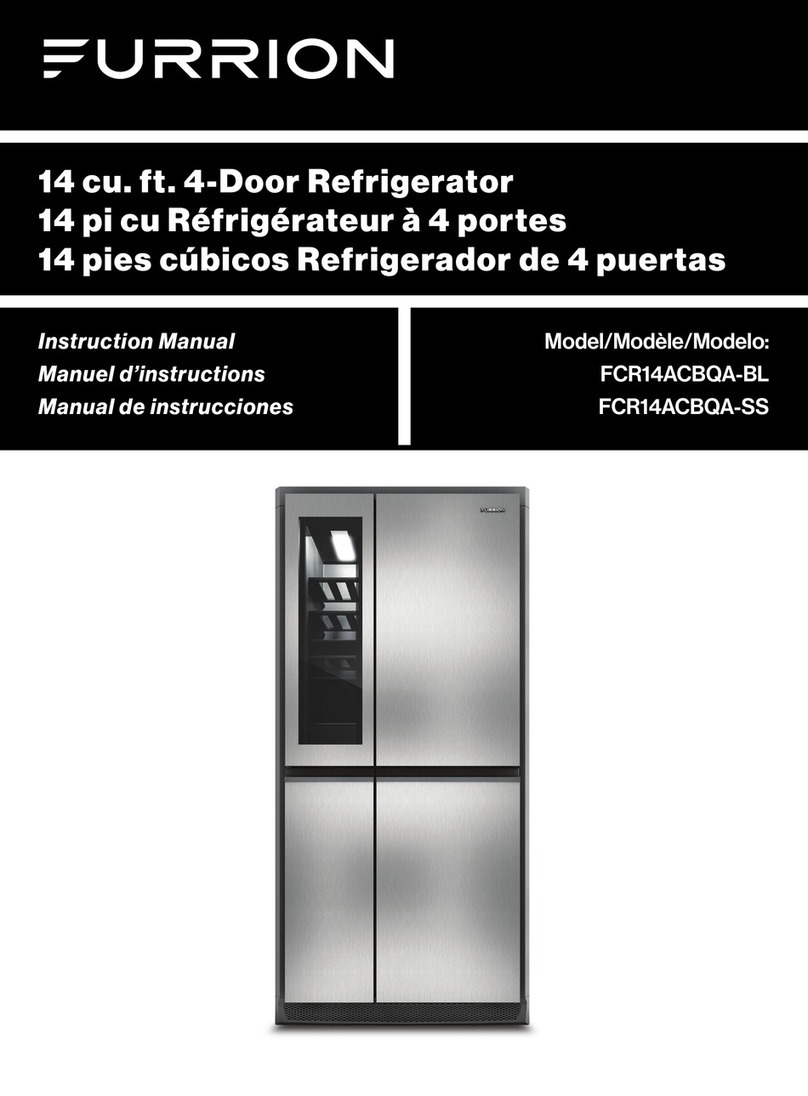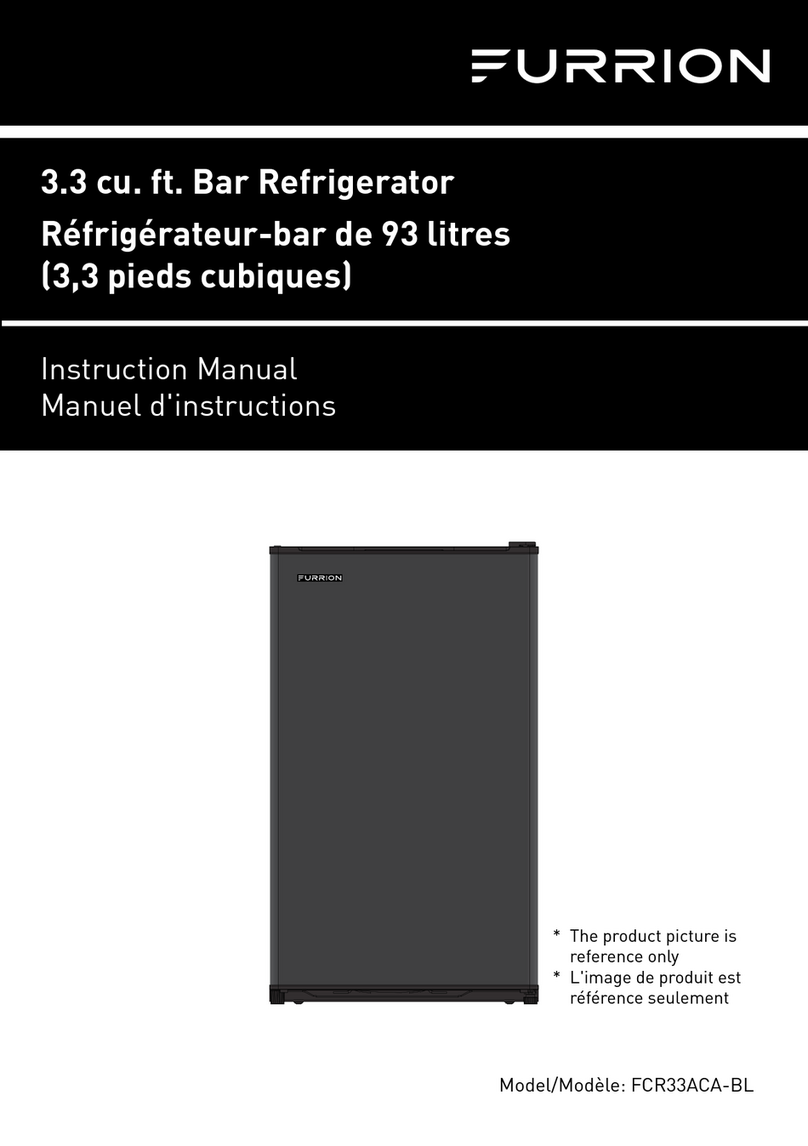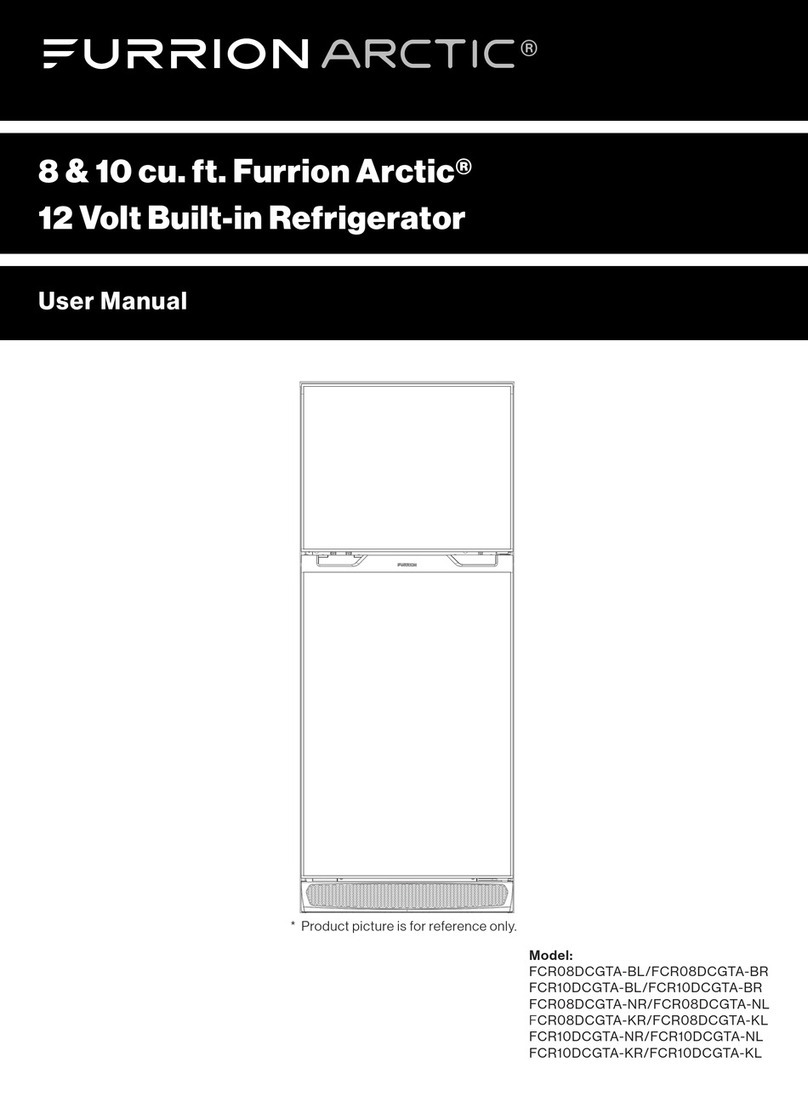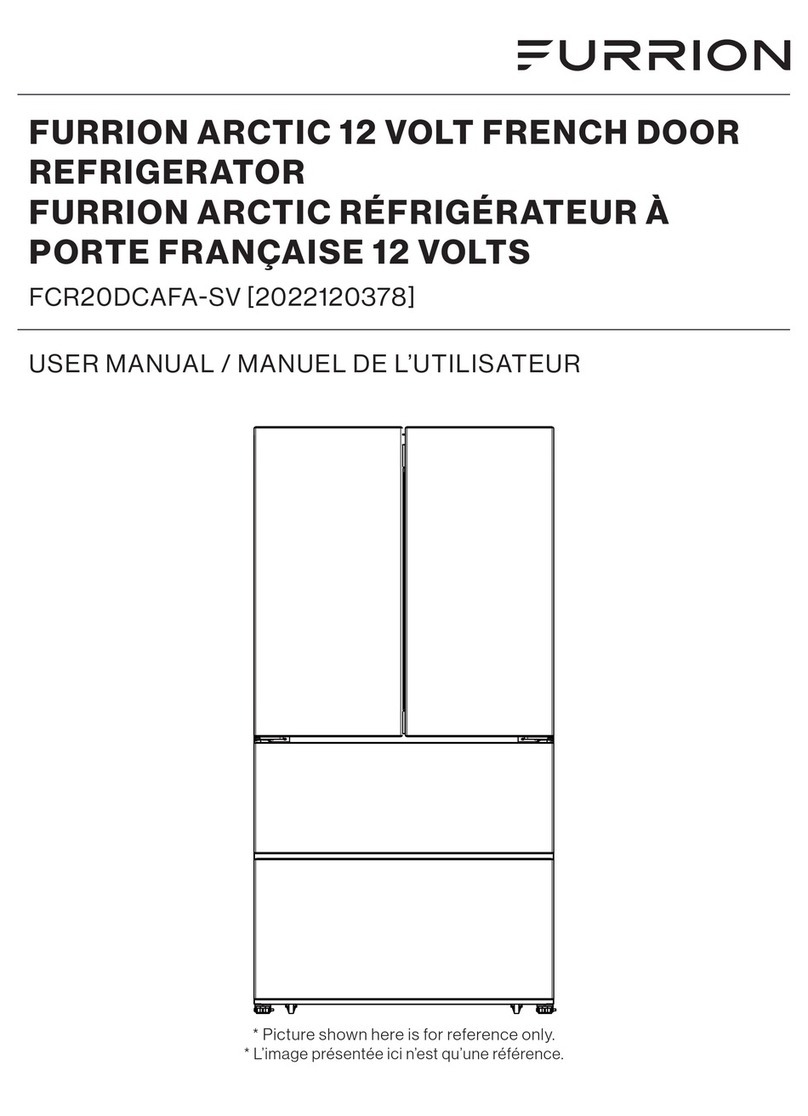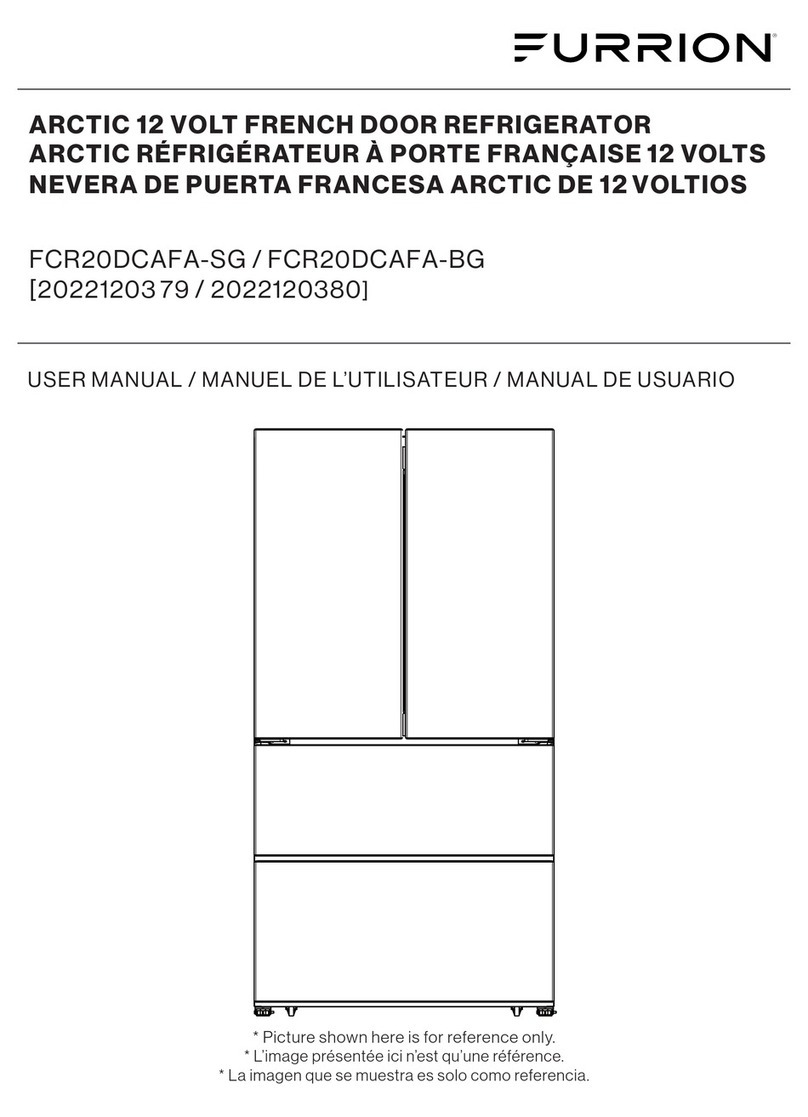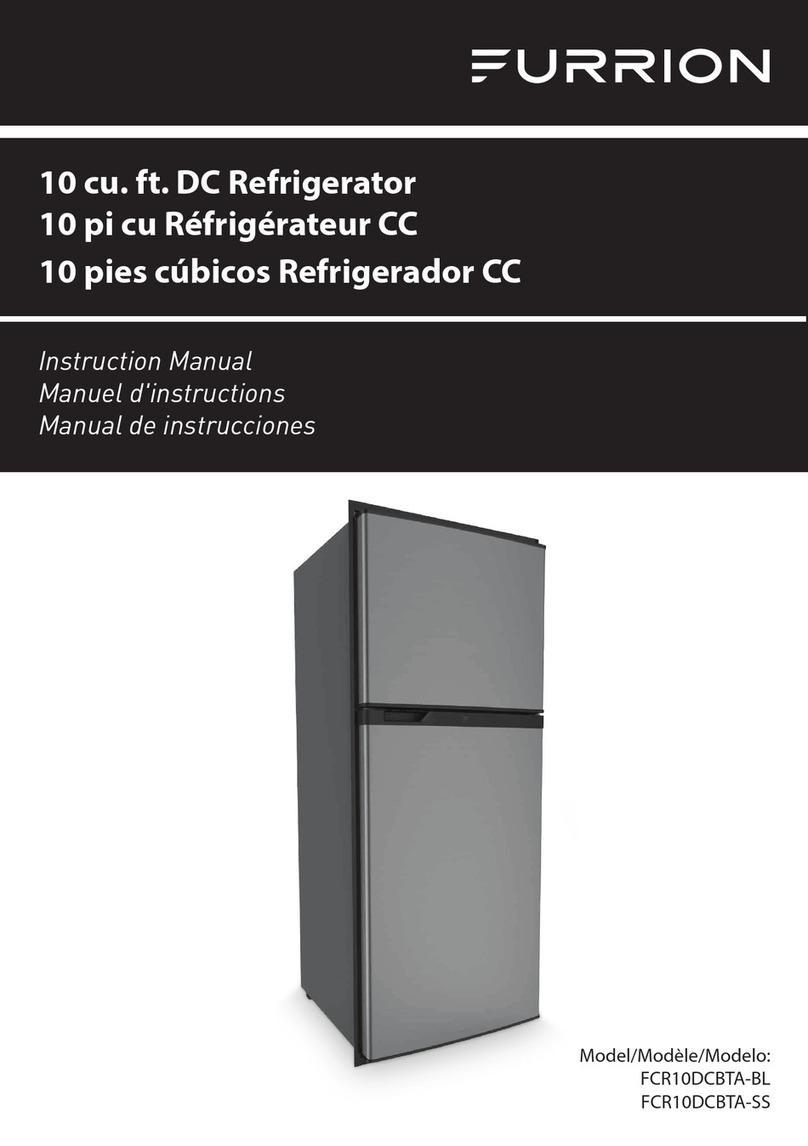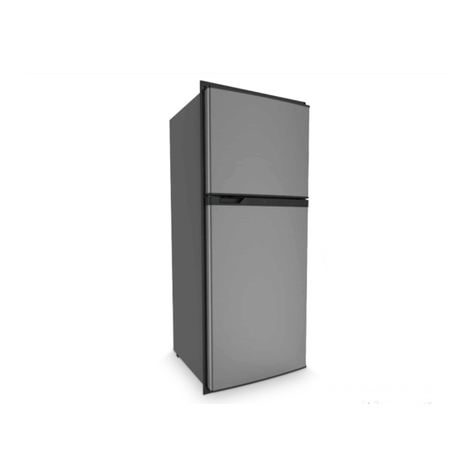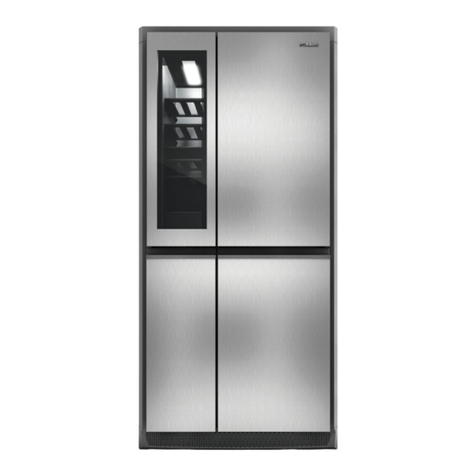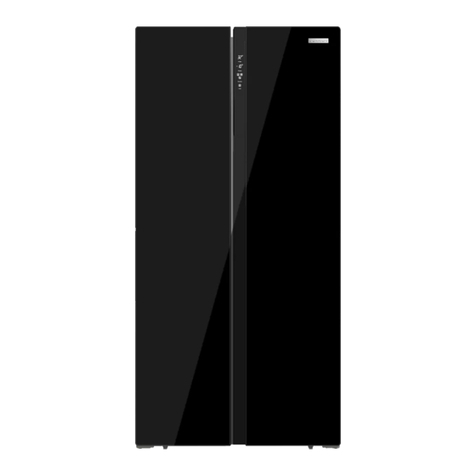
3
Electrical Safety
1. The power cord must not be lengthened.
2. Make sure that the power plug is not crushed or damaged.
A crushed or damaged power plug may overheat and
cause a fire.
3. Make sure that you can access the main plug of the appli-
ance.
4. Do not pull the main cable.
5. If the power plug socket is loose, do not insert the power
plug. There is a risk of electric shock or fire.
6. You must not operate the appliance without the interior
lighting lamp cover.
7. The refrigerator is only applied with power supply of sin-
gle phase alternating current of 120V/60Hz. If fluctuation
of voltage in the district of user is so large that the voltage
exceeds the scope of 100 ~ 127V, for safety sake, be sure to
apply A.C. Automatic voltage regulator of more than 350W
to the refrigerator. The refrigerator must employ a special
power socket instead of common one with other electric
appliances. Its plug must match the socket with ground
wire.
Daily Use
●This appliance is not intended for use by persons
(including children) with reduced physical, sensory or
mental capabilities, or lack of experience and knowledge,
unless they have been given supervision or instruction
concerning use of the appliance by a person responsible
for their safety.
●Do not store flammable gas or liquids in the appliance as
there is a risk of an explosion.
●Do not operate any electrical appliances in the appliance
(e.g. electric ice cream makers, mixers etc.).
●When unplugging always pull the plug from the mains
socket, do not pull on the cable.
●Do not place hot items near the plastic components of this
appliance.
●Do not place food products directly against the air outlet
on the rear wall.
●Store prepacked frozen food in accordance with the
frozen food manufacturer’s instructions.
●The appliance manufacturers storage recommendations
should be strictly adhered to. Refer to relevant
instructions for storage.
●Do not place carbonated or fizzy drinks in the freezer
compartment as it creates pressure in the container,
which may cause it to explode, resulting in damage to the
appliance.
●Frozen food can cause frost burns if consumed straight
from the freezer compartment.
●Do not place the appliance in direct sunlight.
●Keep burning candles, lamps and other items with
naked flames away from the appliance as not to set the
appliance on fire.
●The appliance is intended for keeping food stuff and/
or beverages in normal household as explained in this
instruction booklet.
●The appliance is heavy. Care should be taken when moving it.
●Do not remove or touch items from the freezer
compartment if your hands are damp/wet, as this could
cause skin abrasions or frost/freezer burns.
●Never use the base, drawers, doors etc. to stand on or as
supports.
●Frozen food must not be refrozen once it has been thawed
out.
●Do not consume ice Popsicles or ice cubes straight from
the freezer as this can cause freezer burn to the mouth
and lips.
●To avoid items falling and causing injury or damage to the
appliance, do not overload the door racks or put too much
food in the crisper drawers.
●Never cover or obstruct the ventilation slats on the
appliance.
Installation
●For electrical connection carefully follow the instructions
given in this manual.
●Unpack the appliance and check if there are damages on
it. Do not connect the appliance if it is damaged. Report
possible damages immediately to the place you bought it.
In this case retain packing.
●It is advisable to wait at least four hours before connecting
the appliance to allow the oil to flow back in the
compressor.
●Adequate air circulation should be around the appliance,
lacking this leads to overheating. To achieve sufficient
ventilation, follow the instructions relevant to installation.
Wherever possible the back of the product should not
be too close to a wall to avoid touching or catching warm
parts (compressor, condenser) to prevent the risk of a fire,
follow the instructions relevant to installation.
●The appliance must not be located close to radiators or
cookers.
●Make sure that the mains plug is accessible after the
installation of the appliance.
Service
●Any electrical work required to do the servicing of the
appliance should be carried out by qualified electrician or
competent person.
●This product must be serviced by an authorized Service
Centre, and only genuine spare parts must be used.
In Case of Malfunction
●If a malfunction occurs on the appliance, please look first
in the “Troubleshooting” section of these instructions. If
the information given there does not help, please do not
perform any further repairs yourself.
●Under no circumstance should you attempt to repair the
appliance yourself. Repairs carried out by inexperienced
persons may cause injury or serious malfunctioning.
Remove Transport Packaging
The appliance and the interior fittings are protected for
transportation. Pull off the adhesive tape on the left and right
side of the door. You can remove any remnants of adhesive
using mineral spirit. Remove all adhesive tape and packing
pieces from the interior of the appliance.
